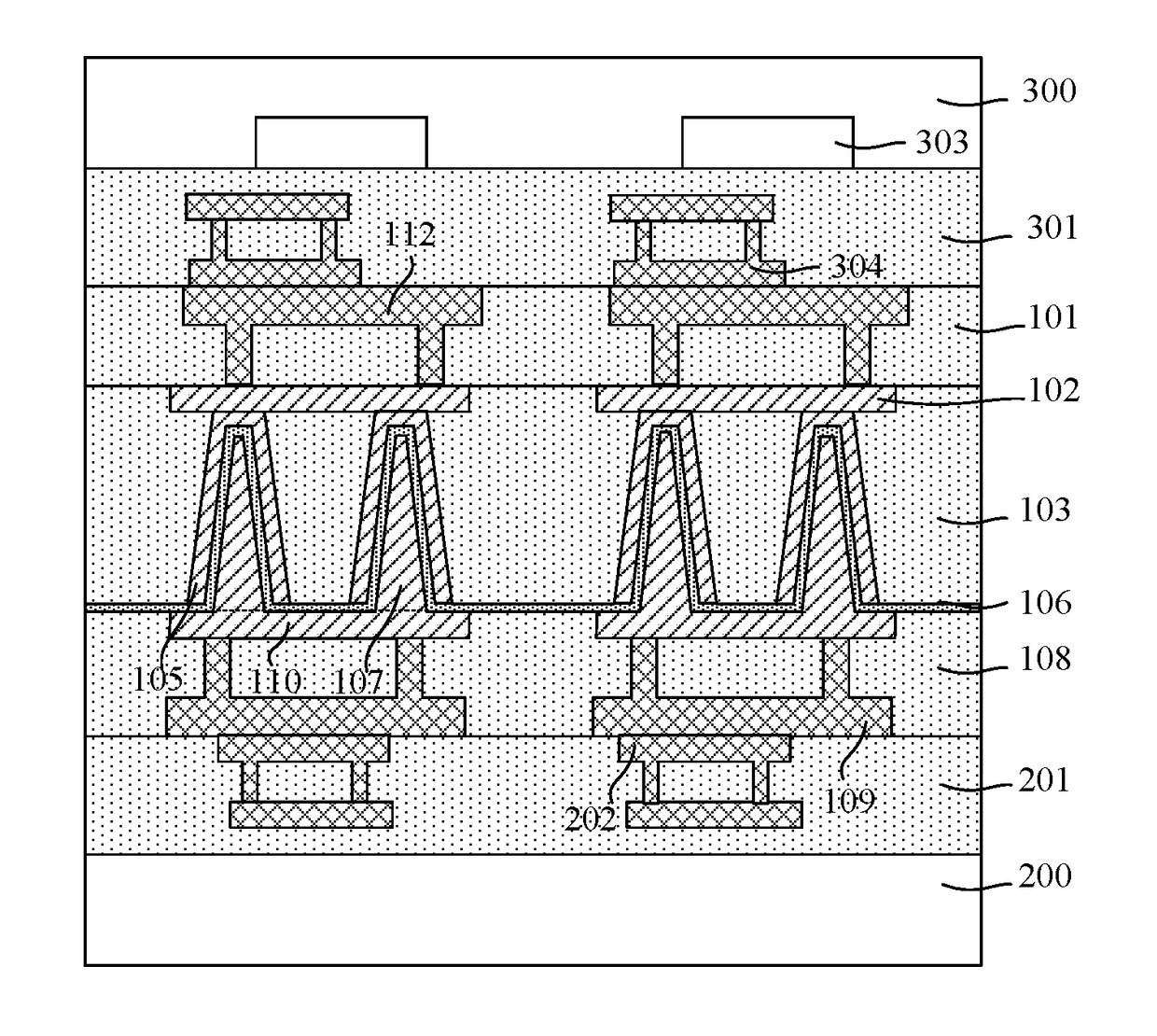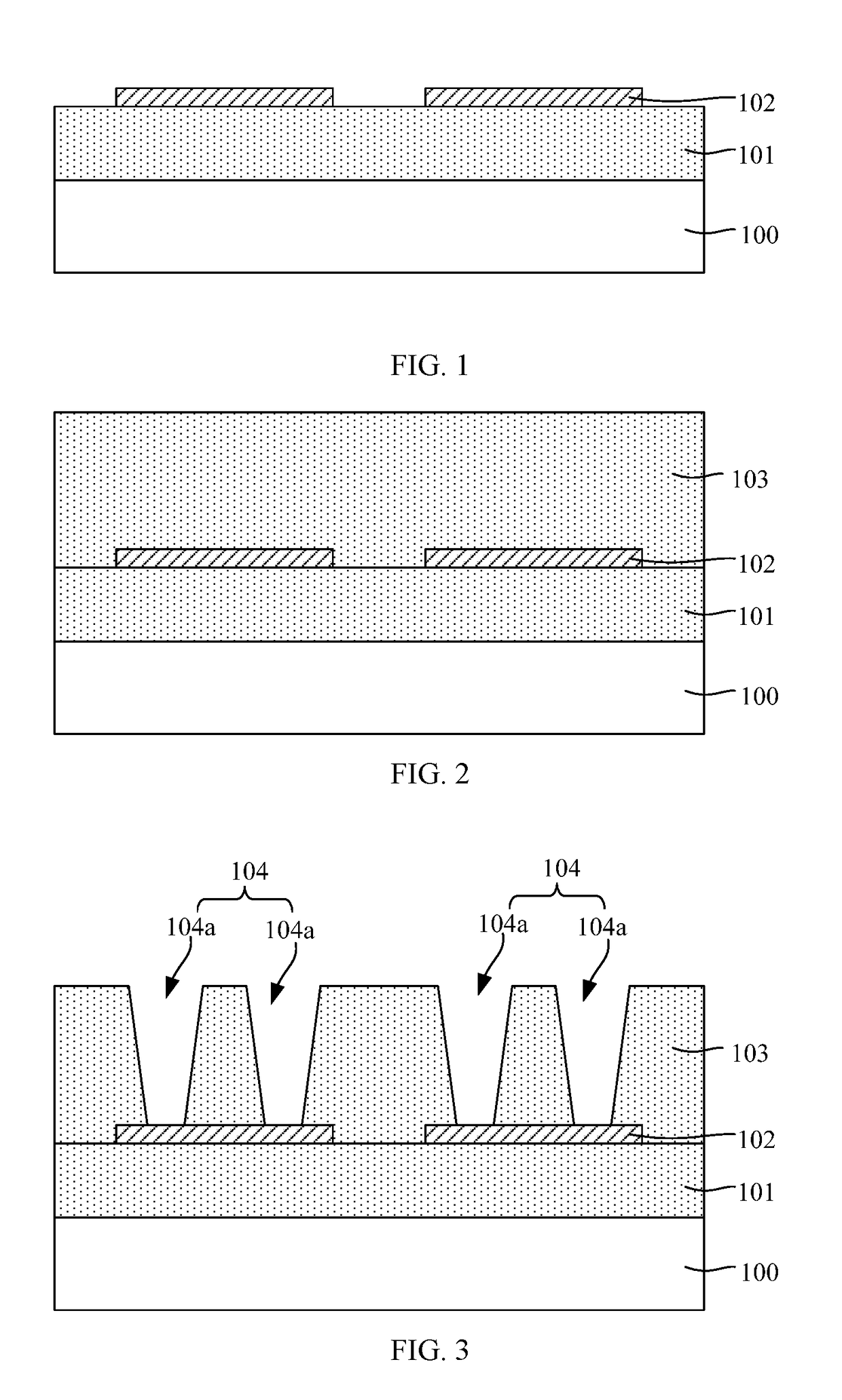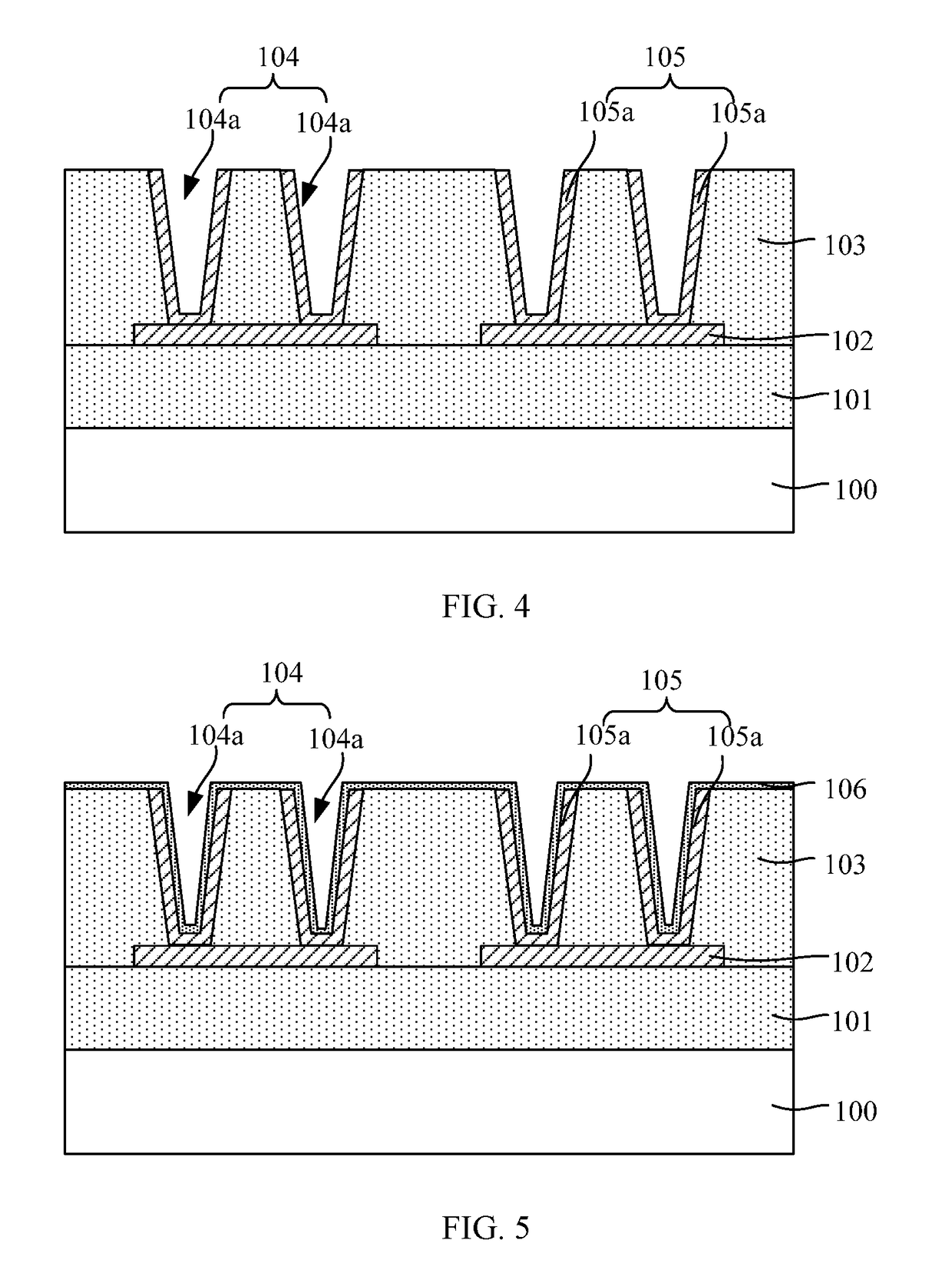CMOS image sensor and fabrication method thereof
a stacked, image sensor technology, applied in the direction of diodes, semiconductor/solid-state device details, radiation controlled devices, etc., can solve the problems of large noise generation, small fill factor of existing cmos image sensors,
- Summary
- Abstract
- Description
- Claims
- Application Information
AI Technical Summary
Benefits of technology
Problems solved by technology
Method used
Image
Examples
Embodiment Construction
[0014]Reference will now be made in detail to exemplary embodiments of the invention, which are illustrated in the accompanying drawings. Wherever possible, the same reference numbers will be used throughout the drawings to refer to the same or like parts.
[0015]FIG. 16 shows a flowchart of an exemplary fabrication process for an exemplary CMOS image sensor consistent with disclosed embodiments. FIGS. 1-14 show schematic views of semiconductor structures corresponding to certain stages of the exemplary fabrication method.
[0016]In FIG. 16, at the beginning of the fabrication process, a first substrate is provided (S101). FIG. 1 shows a schematic view of a corresponding semiconductor substrate.
[0017]Referring to FIG. 1, a first substrate 100 is provided. A first dielectric layer 101 may be formed on the first substrate 100. A plurality of discrete first electrodes 102 may be formed on the first dielectric layer 101.
[0018]The first substrate 100 may be used as a carrier substrate for su...
PUM
 Login to View More
Login to View More Abstract
Description
Claims
Application Information
 Login to View More
Login to View More - R&D
- Intellectual Property
- Life Sciences
- Materials
- Tech Scout
- Unparalleled Data Quality
- Higher Quality Content
- 60% Fewer Hallucinations
Browse by: Latest US Patents, China's latest patents, Technical Efficacy Thesaurus, Application Domain, Technology Topic, Popular Technical Reports.
© 2025 PatSnap. All rights reserved.Legal|Privacy policy|Modern Slavery Act Transparency Statement|Sitemap|About US| Contact US: help@patsnap.com



